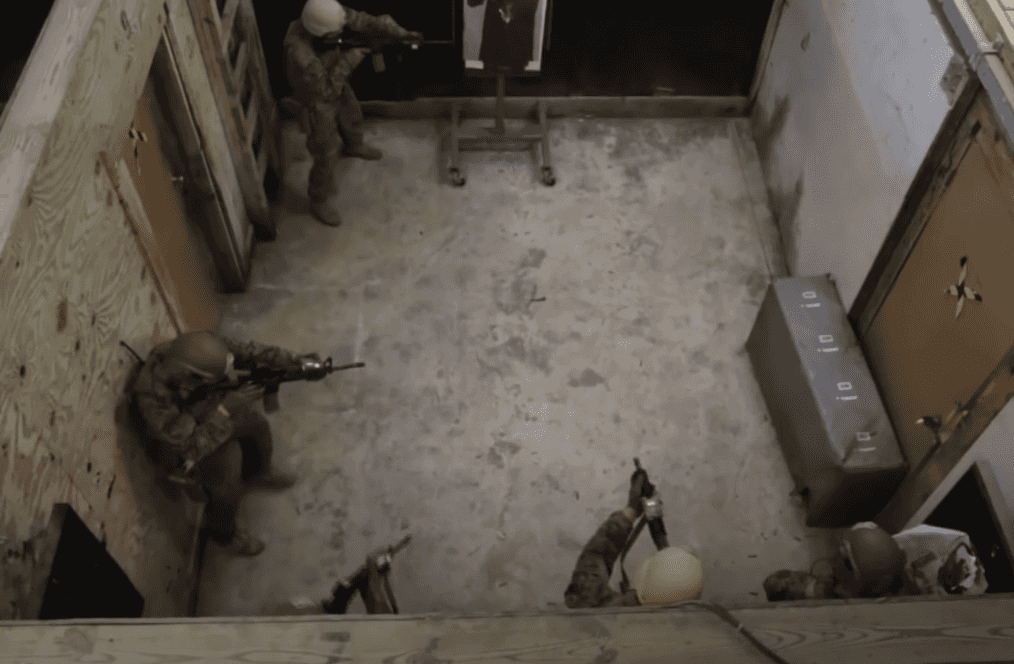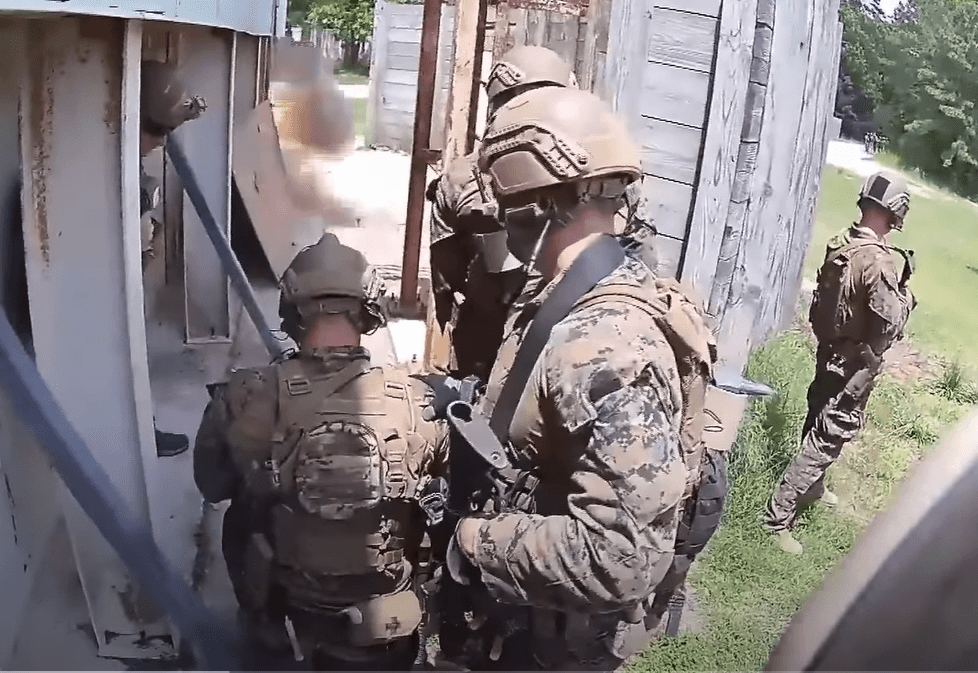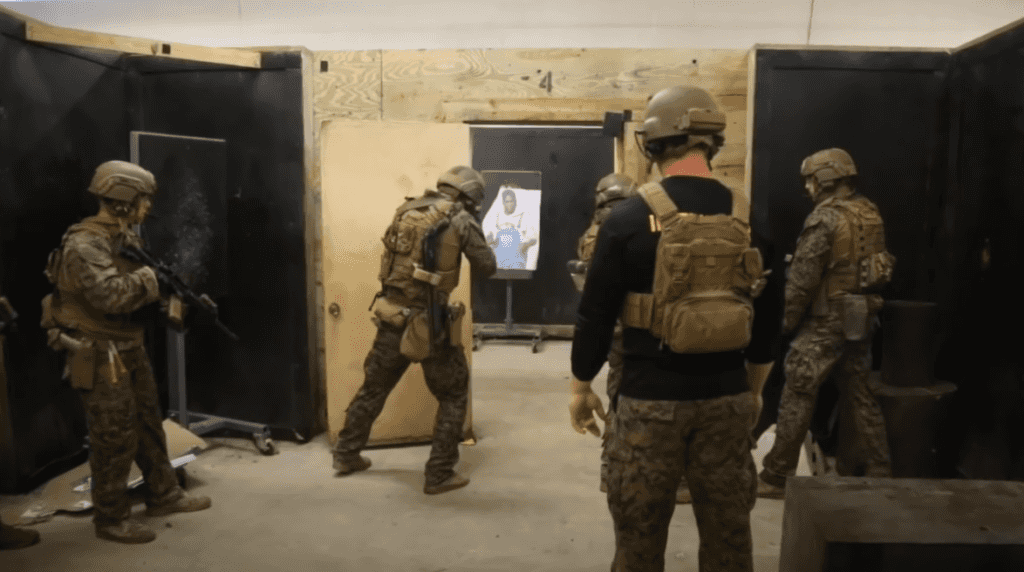When thinking of urban combat, clearing rooms and fighting in close quarters comes to mind, including navigating down tight hallways, clearing staircases, and kicking in doors hoping that an enemy fighter is not on the other side.
In a 2018 video, Reconnaissance Marines conducting a training exercise at a live-fire shoot house in Camp Lejeune, North Carolina, demonstrated that the slow, methodical and precise movement inside an urban environment is often more preferred than loud, chaotic, and uncontrolled violence.
The way in which the Marines move through the shoot house shows that controlled movement is easier to manage than uncontrolled chaos in close quarters. Watch it below:
Before making entry into the shoot house, the Marines posted security outside and prepared to breach. The dedicated breacher placed the charge on the outside of the doorway and prepared to make entry. Once detonated, the charge blew the door off its hinges, allowing the Marines to make a dynamic entry under the temporary stunning effect of the charge detonation.
Once inside, the Marines could get to work methodically clearing one room at a time and ensuring that enemy combatants are neutralized before other Marines flow into the room.

The Marines demonstrated proper muzzle awareness, careful not to allow their muzzle to “flag” or point at other friendly forces in the house. Muzzle awareness and weapons handling is extremely important in an urban environment where improperly discharged weapons can pose a safety risk to others in the room. Rounds can also penetrate walls and harm individuals in other rooms. Knowing where all friendly forces are located in a room, as well as other adjacent rooms, ensures that these Marines are not engaging the wrong targets.
As the unit moves out of a room, the targets are flipped indicating that the enemy has been neutralized and no longer possesses a threat to the forces.

Before the Marines move from one area of the house to another, there is always communication and a “stack” of Marines who prepare before moving to the next room. The “stack” of Marines deploy in various roles and ensure that the entire sector of a room, hallway or entryway is covered by individual Marines.
One man cannot cover all danger areas of a room, which is why proper coordination and communication are essential in close-quarters combat scenarios. The front man flows into the room, engages any targets in his sector, and then the second man into the room flows opposite and engages any enemy in his sector.

As a unit continuously trains together, proficiency is gained and individuals become more comfortable moving more fluidly in environments. It is a necessary progression to start slow, build skills, build communication and then progress through the complexity. This live-fire drill will be one of many that these Marines complete in their time training together.



